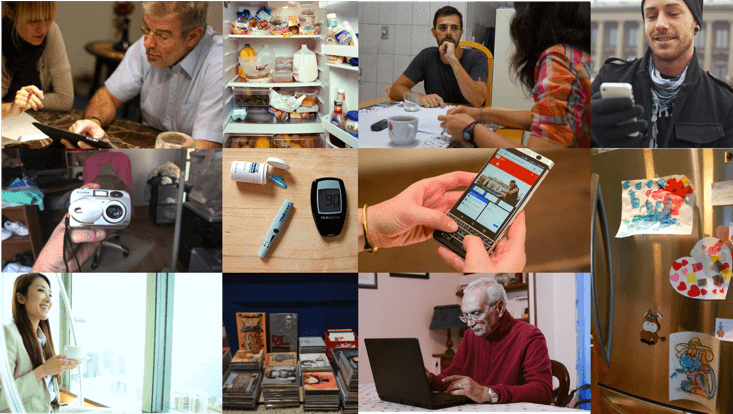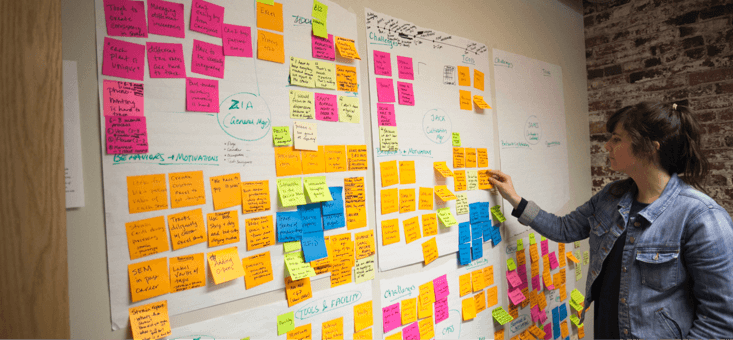
Can you teach empathy?
Given that empathy is one of the three principles inherent to design thinking, I’ve often wondered whether you can learn to be more empathic. And if so, how?
A few years back I ran a digital bootcamp on Design Thinking for a packed room of new analysts and associates beginning their journey at one of the world’s biggest management consulting firms. They came from all over the globe and by many standards would be considered “the best and the brightest.” Most had studied business or economics, so design thinking was a newer approach that they were looking to assimilate. As I stood there talking about empathy and describing how important it is to understand people’s needs, behaviors and pain points in order to really design for them, I wondered how this audience was internalizing the message.

I’ve realized over the years that it is not enough to just say that empathy is important. Emphasizing why it’s important, and teaching new researchers, analysts, and designers the tools and methodologies to more effectively practice it is essential. But the question remains: can it be taught?
Fostering empathy early
I think the simple answer to this question is yes, but there is a disclaimer. I believe that the later you leave it, the harder it is to teach. Teaching empathy to a child, by repeatedly incorporating actions, messages and moments that reinforce thinking about others helps them to develop their “empathic muscle.” Talking about how things they say can affect others, or helping them understand why the child who just joined their class and speaks no english may be feeling shy, not unfriendly, are everyday examples of where teaching empathy begins.
I recently heard a phenomenal TED talk by David Brooks: “The lies our culture tells us about what matters - and a better way to live.” He talks about how deepening relationships is essential to feeling happy and fulfilled, rather than focussing on becoming more successful or self-sufficient. He goes on to describe a group called “Roots of Empathy,” a classroom program, where mothers take their infants into classrooms to allow schoolchildren to observe the infants’ development and to help teach them empathy. He cited a poignant example of an eighth grade student who asked a mother if he could hold her newborn. This student was bigger because he’d been held back, had lived in various foster care situations and had seen his own mother get killed. The mother was nervous, but she decided to trust the student with her baby. He was great with the newborn, asking a number of questions afterwards. One question that Brooks shared from this young man was particularly memorable “If nobody has ever loved you, do you think you can be a good father?”.

This student is essentially asking whether you can be good at something that you’ve never experienced yourself. Holding the baby in the classroom that day may have triggered a level of empathy that was previously not there. Through asking questions and also physically holding the child, he was given an incredible opportunity to consider not only with the needs of the infant, but also a chance to think more deeply about what it might mean to be a parent.
Developing the “empathic muscle” beyond childhood
So what about adults? Is there a point at which it’s too late to teach empathy? I’ve noticed in working in many multi-disciplinary teams that there is a huge range when it comes to empathy skills. We often kick-off projects by trying to understand users, conducting in-depth interviews and analyzing the ways they interact with digital products. Most importantly we are trying to elicit their motivations for doing (or not doing) something. Our interview guides are just a beginning, and often the most revealing answers happen when we go off-script and there is that moment where we’re just talking. I can vividly remember times when I’ve felt a shift in trust, where the interview participant is genuinely wanting to share their story. How you respond in this moment is crucial and the magic can be broken instantly, if you’re not careful. This is never more true than in healthcare, where we are talking about a subject that is deeply personal, emotional and often has included a journey fraught with stress and frustration.
Be humble. Be authentic. Be sensitive.
Lesson #1 in developing empathy, is to first assume you know very little, and that your primary task is to listen and learn. In other words, leave your ego and any preconceptions at the door. Letting an interview participant know at the very beginning that you are there to learn from them is essential, as it helps establish each of your roles early on. Building trust takes time, and when the subject matter is more sensitive it’s even more important to ensure you have enough time to go deep and to really listen to answers.

First impressions and responses really do matter, and it’s ok if you don’t get through all the questions in an interview guide. It’s more important that the participant feels reassured that you are actively listening and that their answers matter. A few simple words can help reinforce this, like “That makes sense” or “Thanks for sharing that - it must have been a tough experience.” If the conversation goes to a place that is deeper, it may ultimately trigger more breakthrough insights that may not have been possible at a more surface level of sharing. It’s good to remember this when those unanswered questions in an interview guide can make the data gathering feel incomplete.
Recognizing when an interview participant is getting tired, or needs some extra time to feel and express emotion is also something that gets easier with practice. While it’s never easy to hear stories of pain or suffering, listening sensitively, pausing intentionally and then delicately but redirecting the interview back on course are important skills to develop.
Debrief early and often
Lesson #2: Debriefing after an interview or participatory design session is another essential way to flex your empathic muscle. What was the participant really saying? What are they really looking for in a solution? Can their needs be met by another digital product, or does the future experience have to be more meaningfully enhanced by real humans?

These are all ways to continue to develop empathy after the interview is over. It’s also a chance to learn from others who may have had a more silent role during the interview. As an interviewer, I find I’m often very focused on navigating the interview, ensuring both parties make it to the other side and mutually feel good about the shared experience. Hearing quotes or themes from others regularly opens up new areas of insight or enquiry that I have missed.
Often it’s not practical to debrief right after the interview. Although not ideal, sometimes tight schedules mean interviews are back-to-back, with 3-4 happening in one day. This can make it more difficult to debrief when perspective is fresh. Even allowing 30 minutes directly after the interview to circle or highlight the most impactful quotes can save countless hours later on trying to remember what was most relevant. And if time is tight, taking 10 minutes to do this silently alone, first, before connecting in as a group helps ensure the most important insights have room to surface.
Empathy needs to be nurtured
I believe that empathy is something that needs to be nurtured, and that it gets much harder to do this the older we get. It’s like a muscle that needs to be flexed regularly so that it doesn’t become stiff or flabby. I think teaching empathy is much easier with children as they are less molded, but introspection and humility are key to fostering it as an adult.
To be a good designer - or team player - it’s essential to empathize not only with the users you are designing for, but also with your client and other members of your team. I was given some excellent feedback a few years ago, to make sure to “empathize more with my client.” It was some of the best professional advice I’ve been given, and I’m deeply grateful for it, even though I recognize at the time I may not have fully appreciated it :-). But that’s a subject for a whole other post!!


